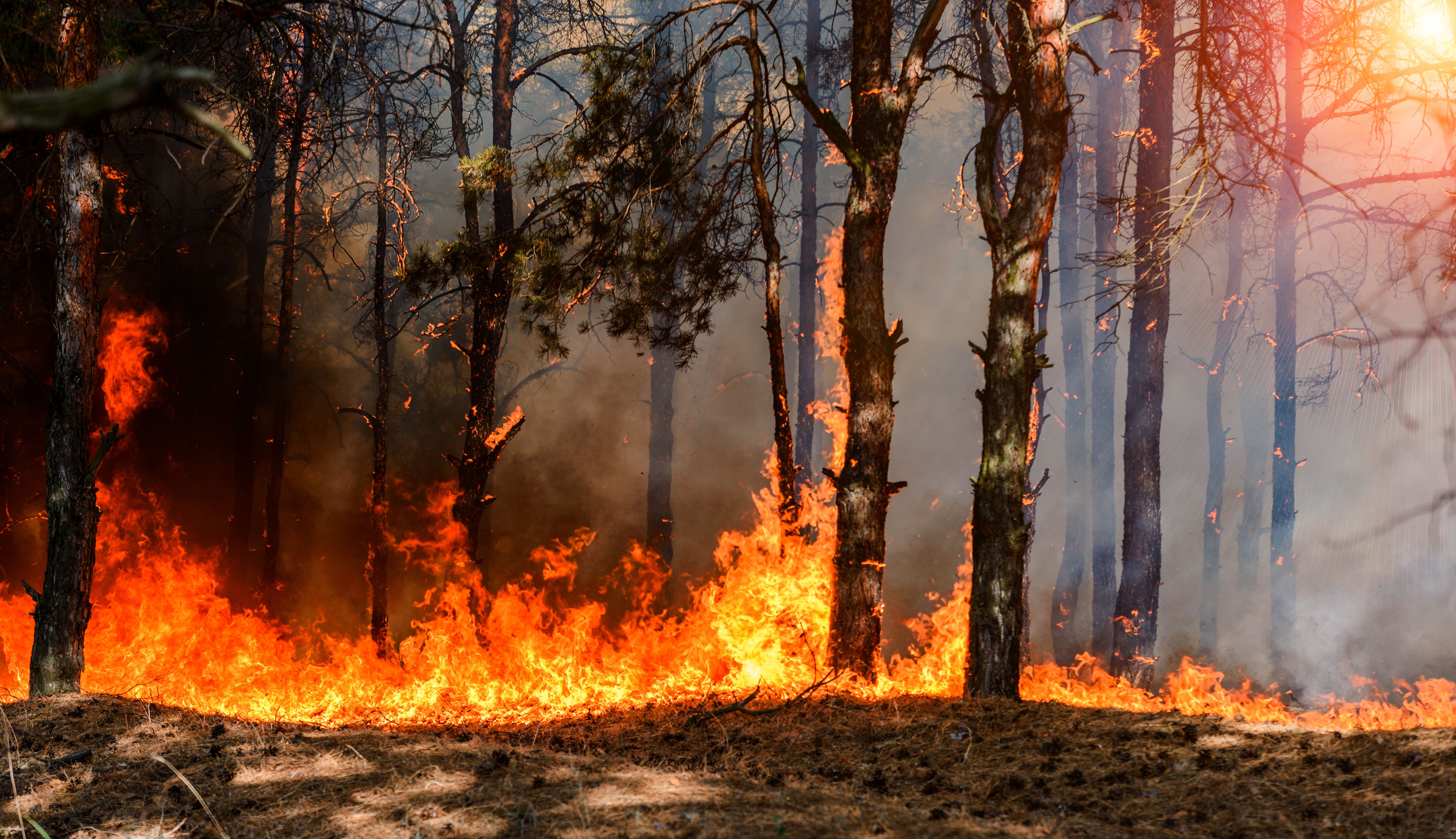- Center on Health Equity & Access
- Clinical
- Health Care Cost
- Health Care Delivery
- Insurance
- Policy
- Technology
- Value-Based Care
Northeast Drought Could Provide Preview of Adverse Health Events Ahead
As the droughts in the northeast persist and wildfires rage, the consequences may extend outside of the damage to wildlife.
As New Jersey and New York City declare drought warnings, the second level of water conservation response,1 wildfires are spreading throughout both due to the dry conditions.2 These drought warnings signal a major health concern on various fronts, including the destruction of wildlife, the potential respiratory implications, and the potential for this to be a more frequent occurrence.
Wildfires can have major health consequences to those who are in range of its smoke, which can be long-term problem should droughts increase in frequency | Image credit: yelantsevv - stock.adobe.com

A drought is defined by the World Health Organization (WHO)3 as “a prolonged dry period in the natural climate cycle that can occur anywhere in the world.” WHO predicts that as many as 700 million people could be displaced by 2030 due to water scarcity and drought. This is a result of climate change throughout the world, making dry areas drier and wet regions more wet along with rising temperatures. The dryness caused by water scarcity along with this rise in temperature are primary factors in the increased wildfires around the world.4
Wildfires not only are dangerous due to the spread of fires, which can destroy miles worth of forests,2 it is the wildfire smoke that is of the most danger. Wildfire smoke can contain an amalgamation of different hazardous chemicals that can spread far and wide due to winds and air currents. These can include fine levels of particulate matter, nitrogen dioxide, ozone, lead, or aromatic hydrocarbons. A large amount of carbon dioxide and greenhouse gases can be released into the atmosphere as well.4
The health implications of this wildfire smoke spreading are numerous and can affect multiple areas of a person’s health if they have prolonged exposure to the wildfire smoke, be it due to living in close proximity, driving through the wildfire smoke, or the wildfire smoke spreading to nearby areas.
The US Environmental Protection Agency as indicated numerous health effects that can impact a person’s health due to short-term exposure.5 The respiratory system is the primary health concern when it comes to inhaling wildfire smoke. This can include difficulty breathing, wheezing, and coughing, with bronchitis, reduced lung function, and an increased risk of asthma exacerbation being the primary health effects. However, other areas of the body can be affected by wildfire smoke. The cardiovascular effects of wildfire can include heart failure, heart attacks, and stroke. Irritation in the eyes of those near wildfire smoke is also possible along with a risk of premature death.5 These effects can also extend to livestock that live in the area, affecting potential sources of food in the future.
With these major effects of inhaling wildfire smoke, preventing any inhalation is paramount to maintaining overall health. The CDC recommends6 staying in rooms that you can close off from outside air and using a portable air filter as well as avoiding burning anything inside. Respirators can also be worn outside if anyone aged 2 years or older has to go outside.
Preventing wildfire smoke inhalation is a common occurrence in states on the west coast, but the east coast is less accustomed to these wildfires. Although wildfires can be good for clearing the forest floor and reforestation, wildfires that generate due to dry conditions and high winds can pose major health risks in areas that don’t often see wildfires.
According to the CDC,7 the percentage of individuals living in New Jersey, New York, and Connecticut living with asthma, a subpopulation that is more susceptible to adverse effects due to wildfire smoke, is slightly higher than the percentage of those with asthma in California as of 2021 (8.9%, 9.8%, and 10.5% vs 8.8%), which could indicate that, should wildfires become as prevalent as predicted in the area, the burden on the health care systems in the area could be more demanding as patients come in with complications due to asthma. Heart disease and chronic lower respiratory diseases are also primary causes of death in both New Jersey8 and New York,9 which makes the prospect of more wildfire smoke in the area a cause for concern given the effect it could have in exacerbating heart and lung diseases in the area.
As droughts are predicted to increase in frequency across not only the Northeast but also around the world, the prevalence of dry vegetation and, therefore, wildfires will continue to increase. Preparing for this inevitability should be of primary concern going forward, including planning infrastructure around the possibility of fires coming close to houses. Preparing more firefighters for wildfires and preparing health care infrastructure for the increase in response will be important in addressing the various potential consequences of more droughts in the area.
References
- Zanger J. What is a drought warning? NYC, 10 New York counties, and New Jersey are all under one. CBS News. November 19, 2024. Accessed November 20, 2024. https://www.cbsnews.com/newyork/news/what-is-a-drought-warning/
- Haigh S, Whittle P. Wildfire threat continues in much of the US Northeast as dry conditions persist. AP News. November 17, 2024. Accessed November 20, 2024. https://apnews.com/article/wildfire-new-york-new-jersey-jennings-00215fa5dcbfde4164924d486e363c2e
- Drought. World Health Organization. 2024. Accessed November 20, 2024. https://www.who.int/health-topics/drought
- Wildfires. World Health Organization. 2024. Accessed November 20, 2024. https://www.who.int/health-topics/wildfires
- Health effects attributed to wildfire smoke. EPA. Updated October 23, 2024. Accessed November 20, 2024. https://www.epa.gov/wildfire-smoke-course/health-effects-attributed-wildfire-smoke
- Safety guidelines: wildfires and wildfire smoke. CDC. 2024. Accessed November 20, 2024. https://www.cdc.gov/wildfires/safety/how-to-safely-stay-safe-during-a-wildfire.html
- Most recent state or territory asthma data. CDC. Updated May 10, 2023. Accessed November 20, 2024. https://www.cdc.gov/asthma/most_recent_data_states.htm
- New Jersey. CDC. Updated April 22, 2020. Accessed November 20, 2024. https://www.cdc.gov/nchs/pressroom/states/newjersey/nj3.htm
- New York. CDC. Updated April 22, 2020. Accessed November 20, 2024. https://www.cdc.gov/nchs/pressroom/states/newyork/ny3.htm
